Top 10 Greatest Emperors of Ancient China
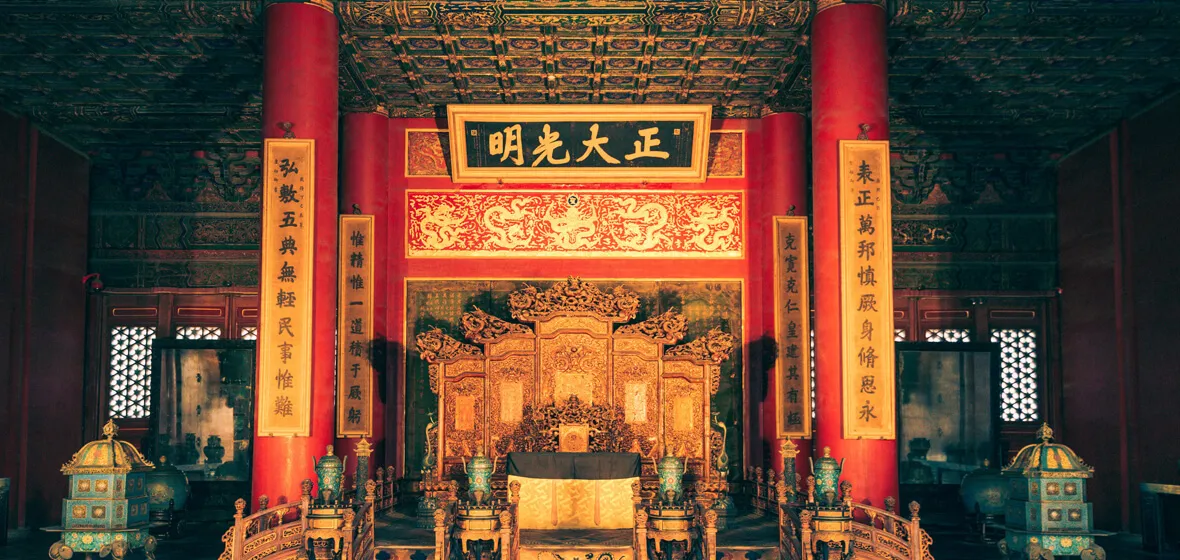
But alas! Qin Shi Huang and Emperor Wu of Han
Were lacking in literary grace,
And Emperor Taizong of Tang Dynasty and Emperor Taizu of Song Dynasty
Had little poetry in their souls;
And Genghis Khan,
Proud Son of Heaven for a day,
Knew only shooting eagles, bow outstretched
--- Mao Ze-dong,
Snow--to the tune of Qin Yuan Chun
In the above poem, Mao Ze-dong listed some of greatest emperors in China’s long history. Depending on different standards, there were about 494 emperors in the 2132 years of the Chinese empire. There were many able emperors and mediocre emperors. The Chinese emperors had tremendous power and responsibility. They were called the 'Son of Heaven', he or she was given a divine right to rule over all people but was expected to promote their best interest and not his own. The emperor should also lead an exemplary life of virtue to act as a template for his subjects to follow. Chinese Emperors usually inherited their position unless they were the founder of a dynasty of their own and had seized power through force. Typically, the eldest male son inherited his father's title, but there were cases when an emperor selected another of his children if he deemed him more suitable for rule. In the case of Kangxi, he was the 3rd son of his father, one of the reasons he was chosen as successor is that he survived the polio.
Here we have listed 10 of the great emperors in ancient times below:
1. Qin Shi Huang (259 BCE–210 BCE)
Major Accomplishments:
- Unified China for the first time in 221 BCE;
- Established the first meritocratic administration system in China;
- Standardized the Chinese script by making the Qin script the official script across the empire;
- Standardized Chinese units of measurements, including weights and currency.

Qin Shi Huang, born Ying Zheng, took the throne of the small state of Qin by the age of 13. To conquer other states, Qin Shi Huang built a formidable fighting machine. The Qin was the first state to really go into total mobilization for war. One by one, he defeated neighboring states, swallowed their territory into his growing empire, and enslaved their citizens. By 221 BCE he had unified a collection of warring kingdoms and taken the name of Qin Shi Huang. Shi Huang means "first emperor”. During his rule, Qin standardized coins, weights, and measures; interlinked the states with canals and roads; and expanded the Great Wall.
Qin Shi Huang was buried in his mausoleum, with the famous Terracotta Army, near Xi'an in Shaanxi province.
2. Emperor Wu of Han (156 BCE–87 BCE)
Major Accomplishments:
- Made Confucianism the state religion of China;
- Established the national academy and imperial examination;
- Established diplomatic relations with Western Eurasia.
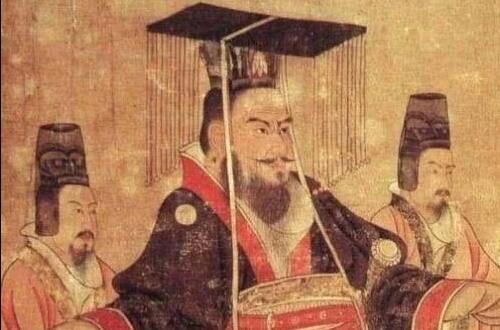
Emperor Wu of Han or Wudi, born Liu Che, ruled from 141–87 BCE. His reign lasted over half a century and is one of the longest reigns in Chinese history. Before Wudi's reign, the Han Dynasty grew strong and stable under the capable leadership of Emperors Wen and Jing. Under this energetic military campaigner, Liu Che, China embarked on its greatest expansion ever, with the empire’s western borders creeping all the way through what we know today as modern Kyrgyzstan. He also annexed Northern Korea on the other side and the north of Vietnam to the south. He stood his ground hard and stopped the nomadic Xiongnu from its raiding campaigns of Northern China. The time of Emperor Wu was highly considered as the golden age and most prosperous period in China’s ancient history.
3. Genghis Khan (1162 CE–1227 CE)
Major Accomplishments:
- Established key trade routes between East and West;
- Created one of the first international postal systems;
- Established universal law, known as Yassa.
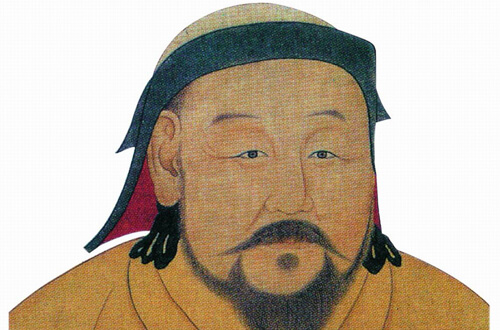
Genghis Khan is the most famous ruler in all of Mongolia's history. Born in north central Mongolia around 1162, Genghis Khan was originally named "Temujin" after a Tatar chieftain that his father, Yesukhei, had captured. Young Temujin was a member of the Borjigin tribe and a descendant of Khabul Khan, who briefly united the Mongols against the Jin (Chin) Dynasty of northern China in the early 1100s. He started his campaign across Asia between 1206 and 1227 CE, at a time when the continent was filled with dozens of little kingdoms. He started unifying all of these kingdoms under a single empire. Under his successors, the Mongol Empire stretched even further, unifying more people. At its height, the Mongol Empire reached from China's coast on the Pacific Ocean all the way to the Black Sea in Eastern Europe. It was one of the largest empires in human history, incorporating over 12 million square miles of land, and one of the simplest rules was no fighting within the empire. Thus, the Pax Mongolica was developed.
4. Emperor Gaozhu of Han (256 BCE-195 BCE)
Major Accomplishments:
- Lightened the tax burden of the peasants;
- Established the Han Dynasty and unified China;
- Established the 1st national library in China.
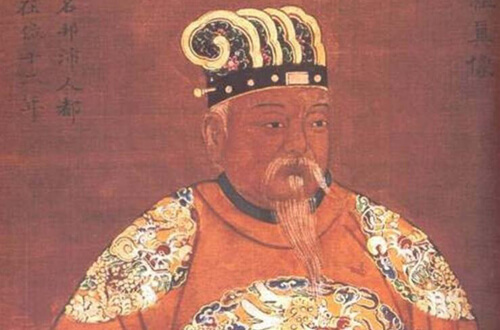
Emperor Gaozu of Han, born Liu Bang with courtesy name Ji, was the founder and first emperor of the Han dynasty, reigning in 202–195 BCE. Prior to coming to power, Liu Bang initially served for the Qin dynasty as a minor law enforcement officer. He turned rebel after the death of the Qin Shi Huang in 210 BCE. The rebels were under the nominal leadership of Xiang Yu, a warlord who defeated the Qin armies. After the downfall of the Qin dynasty, a civil war broke out between Liu Bang and Xiang Yu. The civil war ended when Xiang Yu took his own life in 202 BC, upon which Gaozu became the ruler of China. Liu Bang is often regarded as a kind ruler who implemented Confucian ideals in his administration. However, Liu Bang himself was originally a rough person who disdained educated men. This continued even when he became emperor and his point of view only changed when he met the scholar Lu Jia, who convinced the emperor of the merits of ruling the empire according to Confucius’ teachings.
The Han Dynasty is a very important dynasty in China’s long history. We can still observe its legacy today. The name in Chinese for the Chinese language itself is hanyu, literally “the Han language.” The most populous ethnic group in China, which makes up 91% of the nation’s population, is known as hanzu, or the “Han race.”
5. Emperor Hongwu of Ming (1328 CE-1398 CE)
Major Accomplishments:
- Introduced legal code called Da Ming Lü, the code enunciated the importance of family relations. It also contained laws that required better treatment of slaves;
- Reintroduced civil service entrance examinations in China.
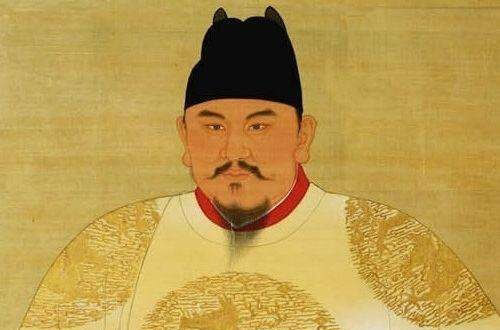
The Hongwu Emperor, personal name Zhu Yuanzhang, was born into a destitute peasant family in Fengyang in eastern China’s Anhui province. China was then being ravaged by famine, plagues, and peasant revolts. He joined the rebel Red Turbans Movement and finally took over the leadership. The rebels finally overthrew the Yuan dynasty in 1368. Zhu Yuanzhang defeated the two major rival rebel leaders Chen Youliang and Zhang Shicheng and declared himself Emperor of China, taking the reign name Hongwu. Zhu Yuanzhang remembered his own peasant past and many of his policies were designed to aid poor farmers. He distributed land to many poor farmers and created records to prevent the gentry from taking peasant land. Public works projects, including dikes, irrigation canals and more, were designed to help the peasantry. Land taxes were kept low during the rule of Emperor Hongwu. His policies conformed to Confucian doctrines that place agriculture above commerce and trade.
6. Emperor Taizong of Tang (598 CE–649 CE)
Major Accomplishments:
- Expanded the Tang Empire;
- Reestablished a unified civil service after years of rebellion and civil unrest;
- Created the “era of good government of Zhenguan” which was considered the first
- golden age of the Tang Dynasty, and which lays a solid foundation for the Kaiyuan era.
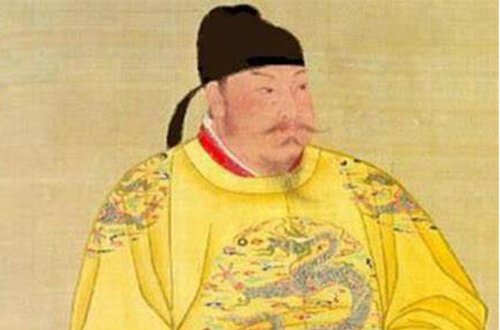
Emperor Taizong of Tang, birth name Li-Shimin, was the second son of the founding emperor, Tang Gaozu. He is considered one of the greatest rulers in Chinese history for his reforms of the government and the laws, his religious tolerance, and the prosperity China enjoyed under his reign. After assisting his father in founding the Tang dynasty in 618 CE, the future Taizong Emperor, then styled the Prince Qin, continued battling against tough contenders to secure the borders of China. Several years later, he wiped out all the major rivals and returned triumphantly, but was locked in an intense rivalry with his elder brother, the Crown Prince. The power struggle became one of life and death, and Taizong launched a coup, killing the Crown Prince and forcing his father to yield the throne.
He was greatly successful In consolidating the economic and military might of his young Dynasty. In short, Taizong’s accomplishments firmly laid the groundwork for Tang to become the most glorious dynasty in imperial Chinese history.
7. Emperor Yang of Sui (569 CE-618 CE)
Major Accomplishments:
- Restarted civil service exam system;
- Ordered the construction of the Grand Canal, linking Hangzhou to Yangzhou and north to the Luoyang region;
- Organized the first international trade expo in human history in Zhangye in 609 CE.
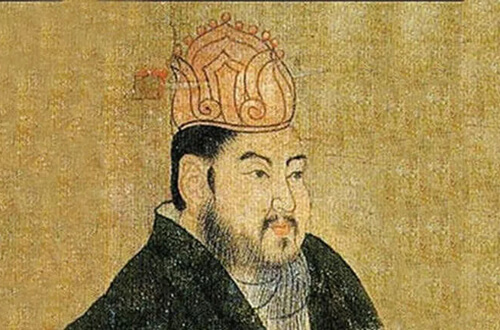
The Sui Dynasty was one of the shortest in Chinese history, but has a rich story that still influences China in the modern day. The Sui Dynasty reunited northern and southern China for the first time since the days of the early Han Dynasty (206 BCE - 220 CE).
Emperor Yang, personal name Yang Guang, was the second emperor of the Sui dynasty and ruled from 604 CE until his death in 618 CE. Courageous and valiant from a young age, he commanded five armies in the invasion of the southern Chen dynasty while he was still a young prince and received much praise for his bravery. After becoming the emperor, he embarked on extensive military campaigns that vastly expanded his territories. During his reign several major construction projects were undertaken which included the building of large canals, roads, and palaces. He also ordered the reconstruction of the Great Wall, a project which resulted in the deaths of six million workers and nearly depleted the royal treasury. He spent lavishly on the construction projects which severely affected the country’s financial resources. Despite his accomplishments, Emperor Yang was generally considered by traditional historians to be one of the worst tyrants in Chinese history and the reason for the Sui Dynasty's relatively short rule.
8. Emperor Yongle of Ming (1360–1424)
Major Accomplishments:
- Sent out ships of exploration, most notably under Zheng He;
- Built the Forbidden City and repaired the Grand Canal so that Beijing could be provisioned without relying on sea transport;
- Commissioned Yongle dadian (“Yongle Encyclopedia”), an 11,000-volume compendium.
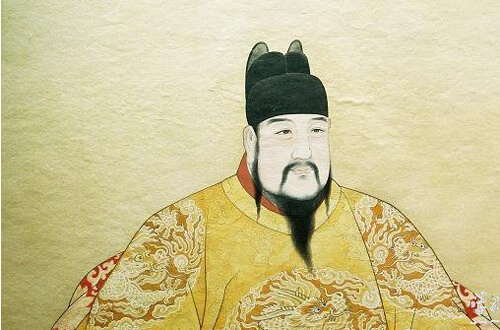
Emperor Yongle, born Zhu Di, son of the Hongwu emperor, was founder of the Ming dynasty. He was enfeoffed (given freehold property in exchange for pledged service) as the Prince of Yan (the region around present-day Beijing) and spent his youth patrolling the northern frontier and keeping the Mongols fragmented. When his nephew Zhu Yunwen succeeded to the throne, Zhu Di rebelled and became emperor in 1402. He embarked on a series of ambitious projects, including the lengthening and widening of the Grand Canal, which carried grain and other goods from southern China to Beijing. Zhu Di also built the Forbidden City and led a number of attacks against the Mongols, who threatened the Ming's northwestern flank. He also ordered the construction of a large ocean-going fleet. The fleet sailed as far as the east coast of Africa, projecting Chinese power throughout the Indian Ocean and gathering tribute from far and wide.
9. Emperor Kangxi of Qing Dynasty (1654-1722)
Major Accomplishments:
- Longest ruling Chinese Emperor, he ruled China for 61 Years;
- Commissioned the first precise maps of Beijing and the Qing Empire and invited Christian missionaries and Western scholars to China, who introduced new technologies and operated the imperial observatory;
- Commissioned ‘Kangxi Dictionary’, which was published in 1716 and used as the standard Chinese dictionary for the next two centuries.
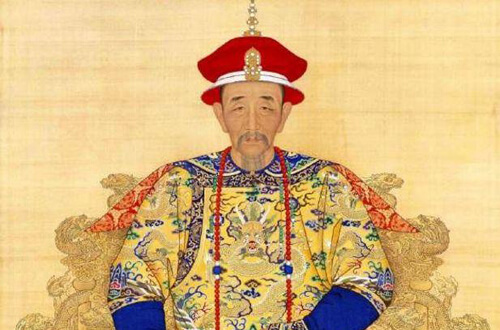
Emperor Kangxi, born Xuanye, ascended the throne as the Kangxi Emperor at the age of 8. Six years later, at the age of 14, he began to attend the state affairs. At the beginning of his reign, Kangxi was known for being frugal with his expenses, holding only a small number of court members to attend to his needs. Not once were taxes increased, even when there was an ongoing war. There were also several times when taxes were decreased or exempted. Furthermore, the emperor declared in 1711 that there would be a fixed tax depending on the current number of taxpayers in that year. This meant that even if the population grew in the coming years, taxes would not be raised. Kangxi also managed the flooding of the Yellow River (Huang He) and restoration the Grand Canal.
10. Emperor Taizu of Song (927 CE–976 CE)
Major Accomplishments:
- Unified China after it was split into several warring states following the disintegration of the Tang Dynasty;
- Expanded the imperial education system;
- Championing academies that encouraged freedom of thought. This led to some write-ups hailing the Song Dynasty as a Chinese era of liberalism.

Emperor Taizu of Song, personal name Zhao Kuangyin, originally served as a general under the short-lived later Zhou Dynasty. During an expedition, his troops rallied and insisted that he take over the throne. This was called the Chenqiao coup, but some modern historians have questioned whether it was actually masterminded by Taizu himself. Taizu was an able emperor. To ensure the scholar-officials did not abuse their new-found power, he revived the tried and tested civil service examination system. These entry tests to the civil service ensured that at least a healthy majority of officials were selected on merit rather than their family connections or outright bribery. Despite his military background, Emperor Taizu was a keen patron of the arts once he had established himself as emperor. Overall, Emperor Taizu laid the foundation for the Song Dynasty which was a period of great achievement in China across various fields. These inventions and innovations not only had an impact on China but would eventually be transmitted to the rest of the world.

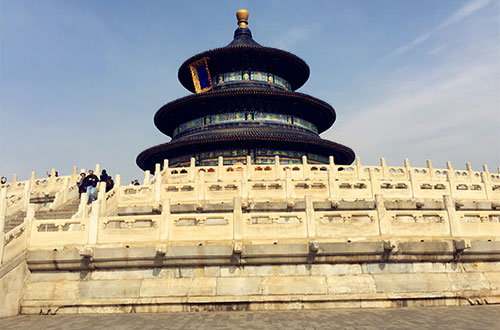 Top 10 Historical Sites in China
Top 10 Historical Sites in China 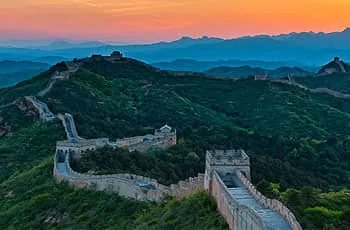 Top Great Wall Sections
Top Great Wall Sections 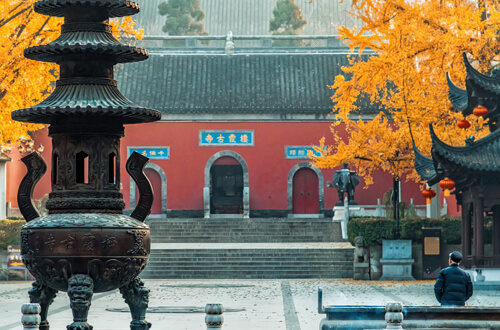 Ten Ancient Capitals of China
Ten Ancient Capitals of China 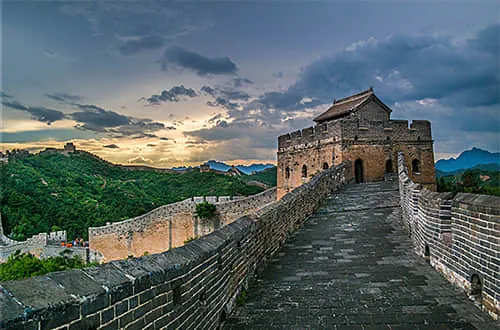 Top 10 Landmarks in China
Top 10 Landmarks in China